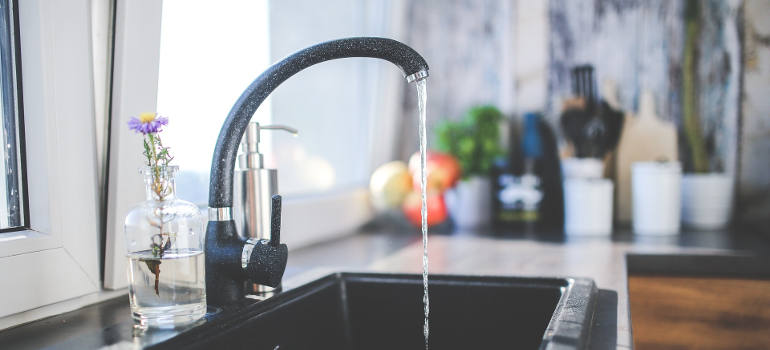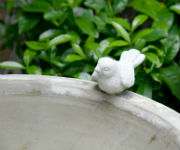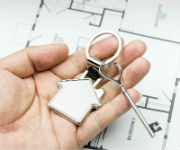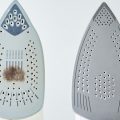
If you want a spotless, sparkling bathroom and kitchen, you must learn how to eliminate limescale buildup. In areas with a lot of water, these unsightly white marks tend to accumulate and can be difficult to remove, especially if you have hard water. Do you want to know how to remove limescale from taps, showers, toilets, and other fixtures?
The good news is that you already have all the necessary items in your home to get rid of limescale. You can effectively remove limescale by utilising citric acid in lemons or acetic acid in vinegar.
But first things first:
Table of Contents
What is limescale?
Limescale, also known as hard water deposits, is a white, chalky substance that builds up over time in areas with hard water. Hard water contains a high concentration of dissolved minerals such as calcium and magnesium, and when the water evaporates, it leaves behind mineral deposits that gradually accumulate and harden, forming limescale.
This buildup can occur on various surfaces in your home that come into contact with water, including bathroom, shower, taps and kitchen fixtures, pipes, appliances, and even on your glassware and dishes.
Discover when it is appropriate to use natural ingredients from your kitchen cupboards and when powerful professional limescale removers are your only option to get rid of limescale.
How to remove limescale from appliances
You can use vinegar and lemon juice to remove limescale deposits while also freshening up the insides of your machines.
Washing machine
To clean your washing machine, substitute a large cup of either liquid for your regular detergent and run a regular washing cycle without any clothes. This process will help eliminate limescale buildup and keep your machine running smoothly.
Dishwasher
The methods you can use to descale your dishwasher are not dissimilar to those you can apply when cleaning your washing machine. Just add the chosen ingredient /chemical or natural/ in the base of the equipment and run an empty cycle.
Coffee makers and kettles
How do you get limescale out of a coffee maker? What is the best way to descale a kettle? Both kitchen devices can be descaled in the same way:
# Method 1: Add 2 tablespoons of water softener to your kettle, fill it with water, and boil for a couple of minutes. Run your coffee machine (without coffee) by mixing the water with a softener. For both devices, you can replace the water softener with a dental cleaning tablet, too. Rinse thoroughly with clean water at the end.
# Method 2: Soak your kettle/coffee maker overnight in white vinegar or lemon juice (half full). Top the appliances with water and boil/run the device. Rinse with clean water.
Descaling an iron
If you own a steam iron and live in a hard water area, the device will inevitably suffer at some point from clogging up with limescale. And although most models have self-cleaning functionality, here’s what you can do to facilitate the descaling process.
Dilute white vinegar with water (1:1) and fill the iron reservoir until it’s a third full. Steam the iron for about 10 minutes on medium heat. Then, repeat the process with clean water to remove all mineral residuals. Note that some models do not recommend the use of vinegar, so refer to the manufacturer’s instructions in advance.
The bathroom is the only place in your home where every surface can suffer from limescale deposits. The trick to successfully removing them, especially when using natural ingredients, is to allow sufficient time for the substance to work its magic. You can apply the same cleaning methods to remove hard water deposits from your kitchen sink and tap, too.
How to remove limescale from showers and taps
Metal fixtures may be scratched if you use an abrasive cleaning agent.
Tap
It’s up to you if you want to use a commercial limescale removal or vinegar, for instance. Soak a cotton cloth in the chosen solution and wrap the fixture well. Use a string if necessary and leave overnight. Wipe the dissolved deposits with a sponge the following day. You can also use a drop of baby oil to polish the tap.
Showerhead
This method applies to cleaning a showerhead that can be detached. Unscrew the fixture and soak it for some time in bleach or in a mixture of vinegar and water. When you place it back in position, run the shower for about 5 minutes. This should remove limescale from your shower head. For non-removable shower heads, use the trick with the bag as mentioned above.
Bathtubs, shower base and sink
As these bathroom fixtures can be made from different materials, go safe and purchase a suitable limescale removal product, especially if you are not sure whether an acidic substance, such as vinegar, may ruin the surface of your bath, for instance.
Also, in particular spots like around the taps, where limescale may have accumulated in thick layers, you can chip them off with a non-scratchy spatula-like implement, first, then work the area with a pumice stone, followed by cleaning the area with a sponge, dipped in a removal solution of your choice.
How to get rid of limescale in toilet
To get rid of limescale in your toilet, you can follow these steps:
- Turn off the water supply to the toilet and flush the toilet to remove as much water as possible.
- Pour a cup of vinegar or lemon juice into the toilet bowl and let it sit for several hours or overnight.
- Use a toilet brush to scrub the bowl and remove any remaining limescale deposits.
- Turn the water supply back on and flush the toilet to rinse away the vinegar or lemon juice.
If the limescale buildup is severe, you may need to repeat this process several times. It’s also a good idea to regularly clean your toilet with a limescale prevention product to prevent buildup from occurring in the future.
How to remove limescale from the shower screen
If you’re looking for an affordable and eco-friendly solution to remove limescale from your shower screen, look no further than distilled white vinegar. It’s brilliant for bringing back the sparkle, but you must use white vinegar, not brown. Make a solution with half water and half vinegar in an old spray bottle and spray it on your shower screen. Use the rougher side of a non-scratch scouring pad with some elbow grease, then wipe it off and buff it with a dry cloth.
Final thoughts
So, there you have it, our professional advice on how to get rid of limescale from your household appliances and surfaces. These cleaning methods prevent limescale, so regular cleaning may prevent deposits from forming. You can always book a one-off cleaning service with Fantastic Cleaners.
Need a cleaner?
Enter your postcode to view our rates and availability in your area.
For questions about the services we offer visit our main site
Was this post helpful? Do you have any limescale removal tips that you can share in the comments below or on our social media channels? Please do so!









Leave a Reply